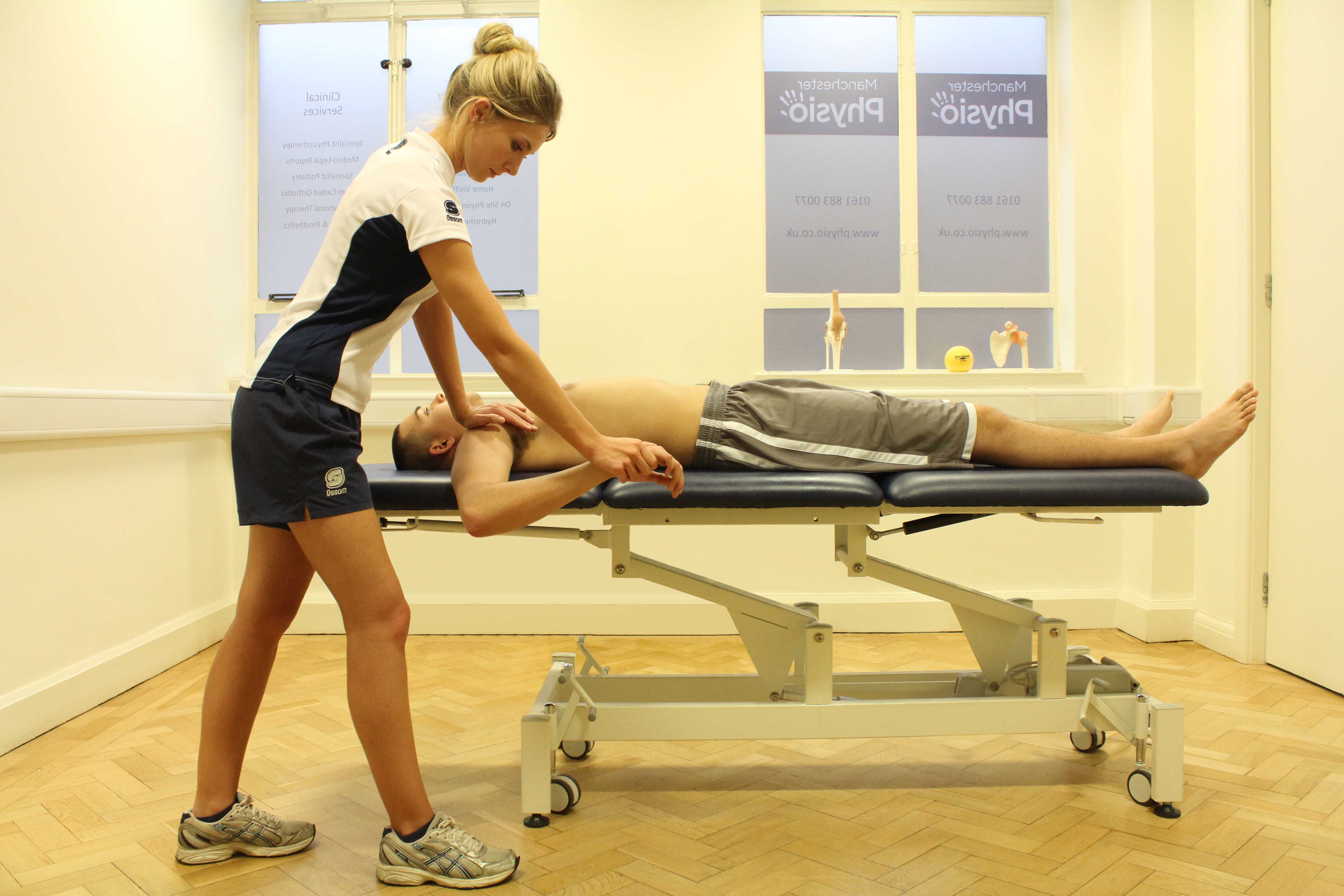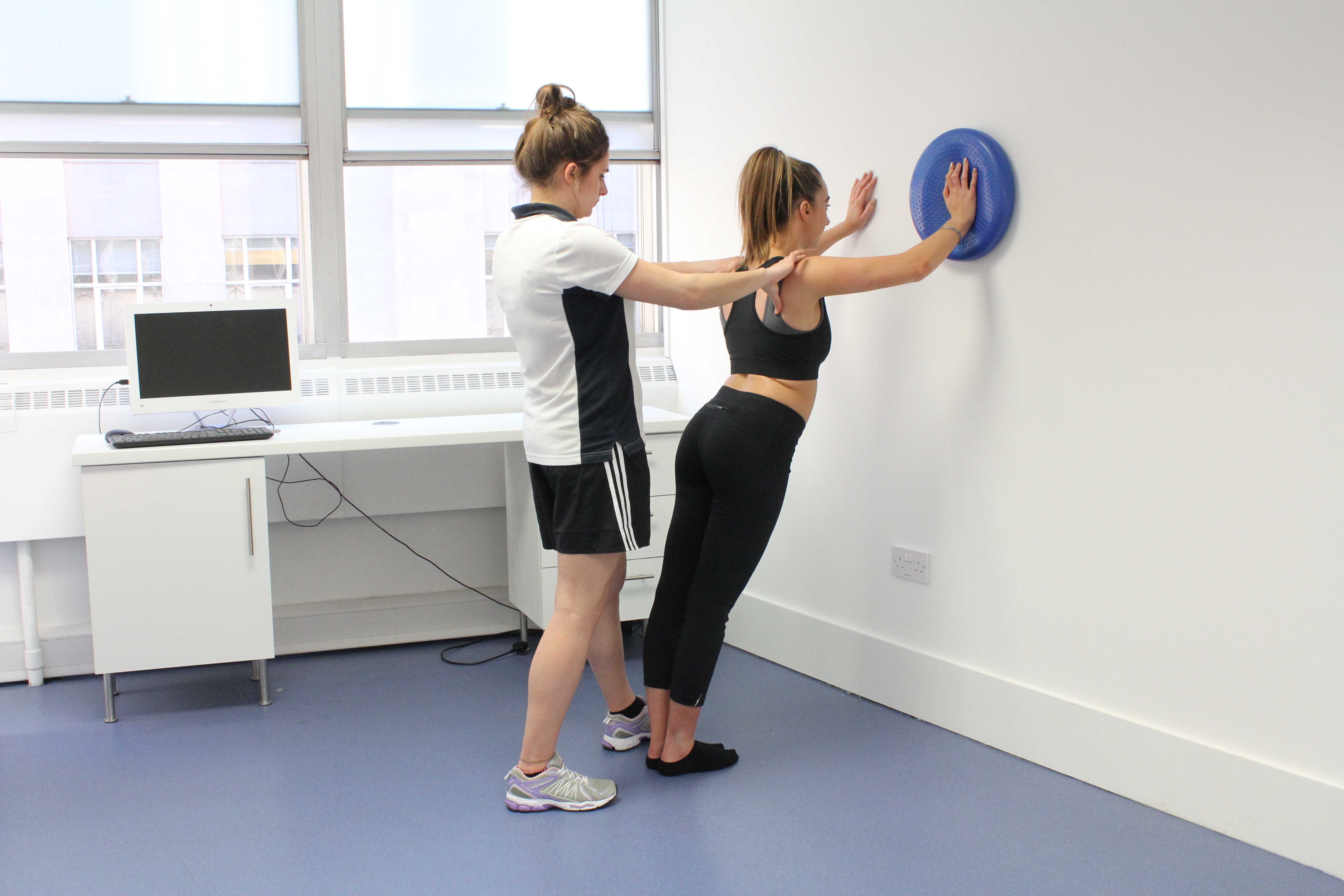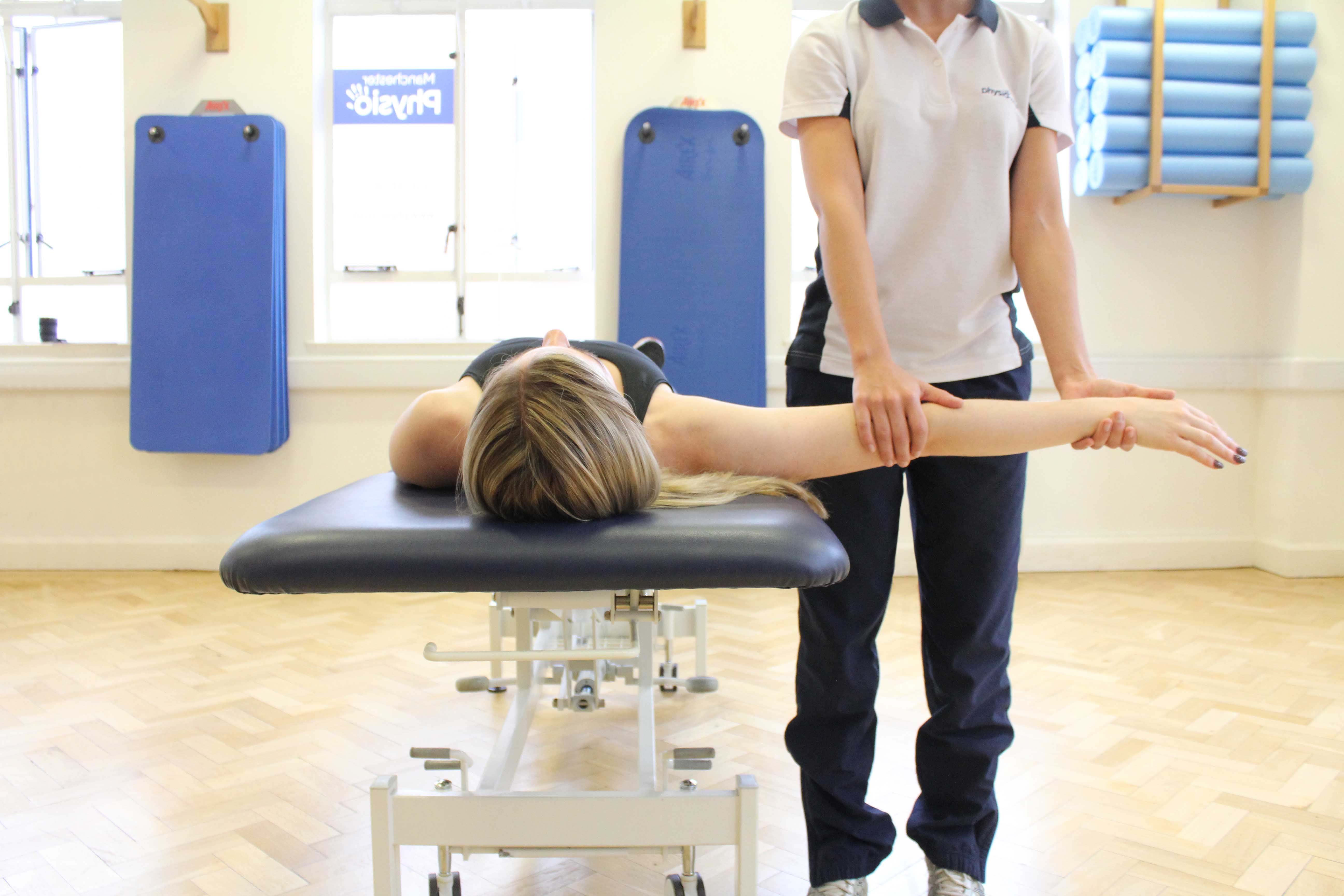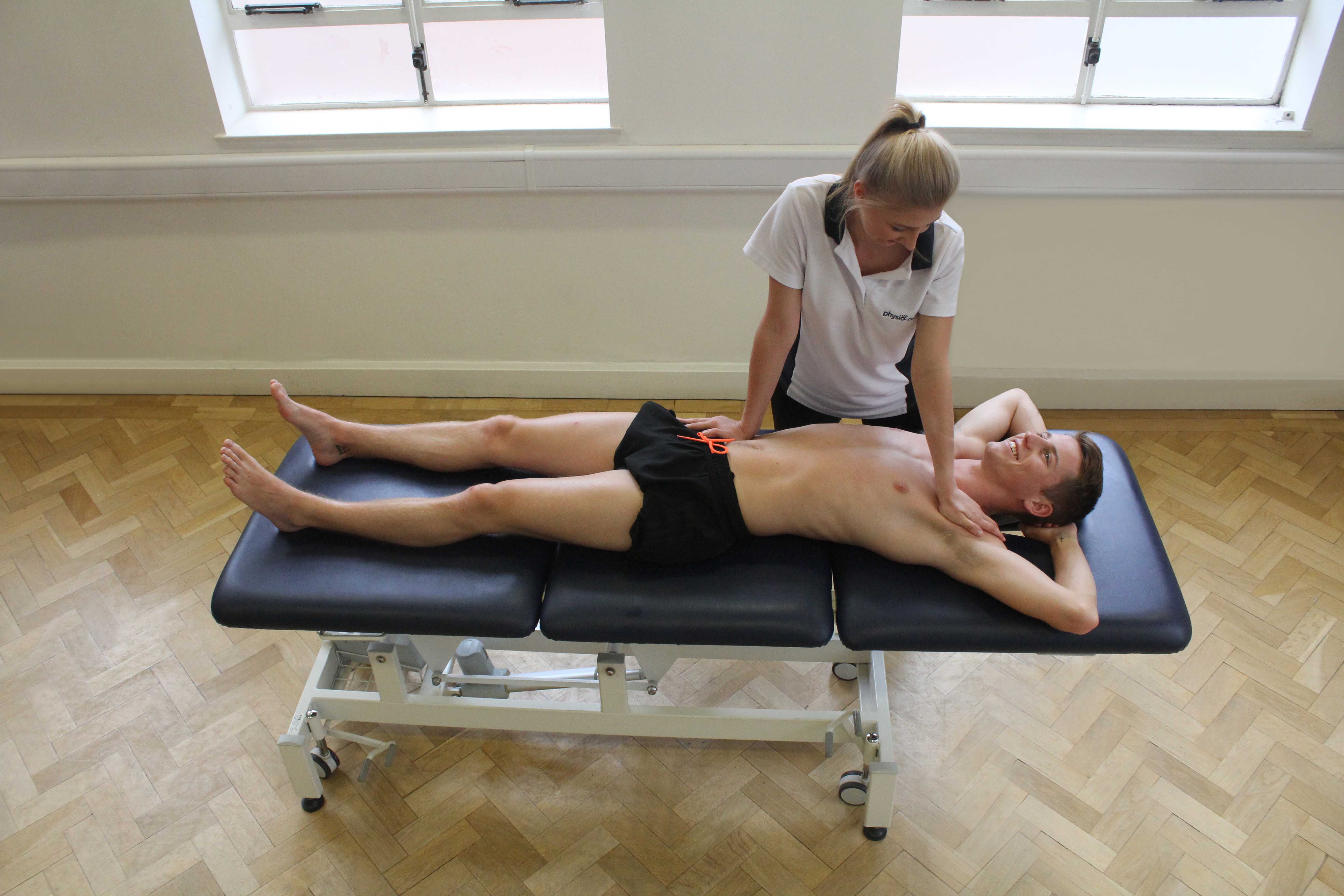Elbow Debridement / Synovectomy
Elbow debridement surgery is a surgical procedure to remove damaged tissues, bone or foreign materials within the elbow joint. Elbow synovectomy involves the removal of inflamed synovium (the membrane that lines the joints). Elbow debridement and synovectomy surgery may occur simultaneously to provide a fully functional and painless elbow. Physiotherapy is essential after elbow debridement / synovectomy surgery to regain full function within the elbow joint.
The elbow joint like all joints in the body consists of synoviumwhich is usually one or two cell layers thick that produces synovial fluid to help lubricate the joint. In people with conditions such as inflammatory arthritis, inflammation and excessive growth of the synovium causes symptoms such as pain, swelling and reduced function within the joint. In patients with inflammatory arthritis, excessive growth of synovium is part of an abnormal immune response in which the body recognizes cartilage as a foreign substance that must be attacked. Loss of cartilage eventually leads to damage to the joint surface as well as the stiffness and pain often seen in all types of arthritis. (Osteoarthritis, the more prevalent form of the disease, does not involve this type of inflammatory response). Other causes, including injury and wear-and-tear are thought to contribute to the degeneration of cartilage within the elbow joint and associated symptoms.
Elbow debridement and synovectomy surgery may be performed either as an open surgical procedure or with the aid of arthroscopy, in which the orthopaedic surgeon uses miniaturized instruments, fiberoptic technology, and a tiny camera inserted through very small incisions in the skin. Magnified pictures from the camera are projected onto a television monitor which guides the surgeon throughout the procedure. The surgery primarily involves the removal of inflamed synovium. Surgery may also include elbow debridement which consists of smoothing rough, fibrillated articular structures as well as the removal of damaged tissues, bone and loose bodies that interfere with the motion of the joint.
Elbow debridement / synovectomy surgery can yield dramatic improvement in function and pain relief. Left untreated, the patient will develop more and more synovitis, which can eventually lead to complete destruction of articular cartilage and the need for joint replacement surgery.
Physiotherapy after elbow synovectomy surgery is imperative to maximise the success of the surgery, prevent the likelihood of any problems occurring and to help guarantee the return of full or near to full strength and function in the elbow.
 Above: Passive stretches and mobilisations of the elbow by MSK therapist
Above: Passive stretches and mobilisations of the elbow by MSK therapistPhysiotherapy prior to elbow debridement / synovectomy surgery
Physiotherapy before you undergo elbow debridement / synovectomy surgery is recommended to prepare your elbow joint fully prior to the surgery. The aim of physiotherapy with Physio.co.uk before surgery is to maximise the success of the surgery and help you achieve a faster and problem free recovery afterwards. Physio.co.uk offers a physiotherapy programme that include activities that focus on strengthening the muscles around the elbow joint, maximising range of movement as well as improving your cardiovascular fitness and muscle endurance.
Symptoms after elbow debridement / synovectomy
After you have had elbow synovectomy / debridement you will experience pain, swelling and stiffness in and around your elbow joint. A surgical dressing will be placed on your elbow and then removed on the third post operative day. You will begin ice therapy immediately after surgery and it is recommended to elevate the operative arm to chest level whenever possible to decrease swelling. You will be given pain medication to control the pain that you will be experiencing. Discharge from hospital depends on the success of the surgery the absence of any post operative problems. Additionally, you will be given a sling to wear for comfort and protection which you will be able to remove for hygiene purposes and for physiotherapy. Physiotherapy should start as soon as possible once you have had your elbow debridement / synovectomy surgery. You are advised to avoid any heavy lifting and repetitive movements using your affected arm for up to two weeks after your surgery. Furthermore, you will not be able to drive until you have full and painless range of motion in your affected upper limb.
 Above: Strengthening exercises for the muscles and connective tissue around the elbow
Above: Strengthening exercises for the muscles and connective tissue around the elbowPhysiotherapy after elbow debridement / synovectomy
Physiotherapy with Physio.co.uk will help restore muscle strength and range of movement in your elbow. A full rehabilitation programme at Physio.co.uk will guarantee the return of full or near to full, function in your elbow joint and help prevent the likelihood of any problems and further injuries in the future. Recovery after elbow debridement / synovectomy surgery can vary depending on several factors but commitment to a physiotherapy programme with Physio.co.uk will significantly improve your function and accelerate your recovery. Physio.co.uk will provide you with a comprehensive rehabilitation programme that focuses on treatment goals that are personal to you. Treatment goals will include the following:
- To restore a pain-free elbow joint
- To restore full range of motion (ROM)
- To restore full muscle strength and length
- To improve cardiovascular fitness and muscle endurance
- To re-establish independence with daily tasks
- Topromote recovery and quality of life
Week 1-3
During the initial period after your elbow debridement / synovectomy surgery, your physiotherapy with Physio.co.uk will aim to protect the surgical site and control any pain and swelling you are experiencing. Additionally, the goals of your physiotherapy programme at this stage will focus on increasing range of movement and maintaining strength in the muscles around your elbow. Your physiotherapy will include:
- Cryotherapy (Ice)
- Elevation and compression
- Pain modalities
- Passive range of movement exercises
- Strengthening and stretching exercises for wrist, shoulder and unaffected arm for support.
- Gentle mobility and strengthening exercises for muscles around elbow joint (biceps, triceps etc)
Week 4-8
Your physiotherapy programme with Physio.co.uk in the second month of your recoverywill continue to focus on controlling pain and swelling within the elbow joint. Physiotherapy will also aim to achieve full range of movement in the elbow as much as possible. Physiotherapy at this stage will also be directed towards increasing muscle strength around the affected elbow joint as well as continuing to improve function and strength within the wrist, shoulder and unaffected arm. Additionally, some gentle cardiovascular activities are also recommended at this time to help accelerate recovery and improve well being. Your physiotherapy will include:
- Continuation of modalities to control for pain and swelling (Ice, elevation, compression)
- Use of sling when out and about for protection (not necessary all the time)
- Passive range of movement exercises for elbow and wrist (bending, straightening, twisting)
- Progression to active range of movement exercises
- Isometric (hold) strengthening exercises for muscles around elbow joint (biceps, triceps etc)
- Hand squeezing exercises (putty/sponge)
- Upper limb mobility exercises
- Stretching exercises to increase flexibility
- Strengthening exercises for muscles in wrist, hand and shoulder
- Activities for opposite arm
- Hydrotherapy
 Above: Passive stretches and mobilisations of the elbow by MSK therapist
Above: Passive stretches and mobilisations of the elbow by MSK therapistWeek 9-12
After successful physiotherapy, you will have seen marked improvements in the function of your elbow and arm by the third month. You shouldn’t be experiencing any pain in your elbow joint at this stage. The goals of your physiotherapy with Physio.co.uk will continue to focus on regaining the full function and strength in your elbow and arm. It is also necessary to continue exercises that aim to improve the strength and range of movement in your wrist, hand and shoulder of your affected arm as well as provide you with activities to help your unaffected arm for extra support. Additionally, at this stage, your physiotherapy programme with Physio.co.uk will include activities that focus on your cardiovascular fitness and muscle endurance to further maximise function in your elbow joint. Activities will also gear towards activities that are specific to your everyday tasks, hobbies or sport. Your physiotherapy will include:
- Continuation of range of movement and stretching exercises from previous weeks
- Continuation of strength training for muscles in wrist, shoulder and unaffected arm
- Emphasis on strength training and progressive resistance exercises for muscles around elbow
- Static arm cycle
- Hydrotherapy
- Function activities relative to job, hobby or sport
- Emphasis on independent home exercises
 Above: Testing strength during an assessment of the elbow.
Above: Testing strength during an assessment of the elbow.Summary
Elbow synovectomy and debridement is a surgical procedure to remove inflamed or damaged tissues and / or bone within the elbow joint to provide a fully functional and painless elbow. Elbow debridement / synovectomy surgery is required for conditions such as inflammatory arthritis which causes inflammation and excessive growth of the synovium (the membrane that lines the joints). Inflammation of the synovium (synovitis) results in pain, swelling and reduced function in the elbow joint. The surgery not only alleviates symptoms caused by synovitis but prevents the destruction of articular cartilage and delays the need for joint replacement surgery. Physiotherapy after elbow debridement / synovectomy maximises the success of the surgery, prevents the likelihood of any problems in the future and helps the patient achieve the return of full or near to function in the elbow joint. Physio.co.uk provides a comprehensive rehabilitation programme that will accelerate your recovery and get you back to your job, hobby or sport as quickly as possible. Call Physio.co.uk now on 0330 088 7800 for more information or to book an appointment please contact us.

 0330 088 7800
0330 088 7800


































